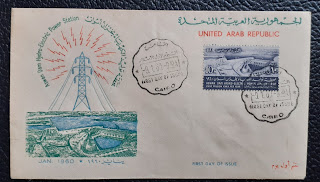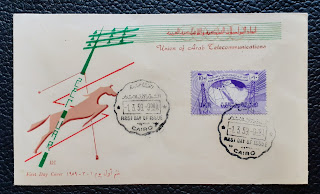The United Arab Republic (UAR) was a sovereign State in the Middle East from 1958 to 1971. Established on 01 February 1958, it was initially a political union between Egypt (including the occupied Gaza Strip) and Syria from 1958, with Nasser as the President, until Syria seceded from the union after the 1961 Syrian coup d'état. Egypt continued to be known officially as the United Arab Republic until 1971.
The UAR adopted a flag based on the Arab Liberation Flag of the Egyptian Revolution of 1952, with two stars to represent the two parts of UAR.
For Syria, it was a difficult period, as they felt that the policies of Egyptian President Gamal Abdel Nasser favoured Egypt. It was never Nasser's intention to share equal measure of power. The National Assembly was established with 400 members from Egypt and 200 from Syria. Syrian Army officers resented being subordinate to Egyptian officers,
Meanwhile, Jordan and Iraq feeling threatened established a unified Arab Federation on 14 February 1958
Instead of a federation of two Arab peoples, as many Syrians had imagined, the UAR turned into a state completely dominated by Egyptians. Growing economic and political differences and the growing unrest of the military, on 28 September 1961, a group of Syrian officers staged a coup and declared Syria's independence from the UAR and thus ended the grouping. However, Egypt retained its "United Arab Republic" name till 1971.
The Pan- Arabism ideology that espouses the unification of the countries of North Africa and Western Asia, referred to as the Arab world, reached its height of popularity during the 1950s and 1960s.
First Day Covers (FDC) of UAR
Coins of UAR
UAR money was issued separately for Egypt and Syria
UAR Egyptian Coins
2 Milliemes, 1962
UAR, Syrian Coins
Currency Notes
































I would have never known this if it weren't for this walk down history! Once again, great article Uncle!
ReplyDelete